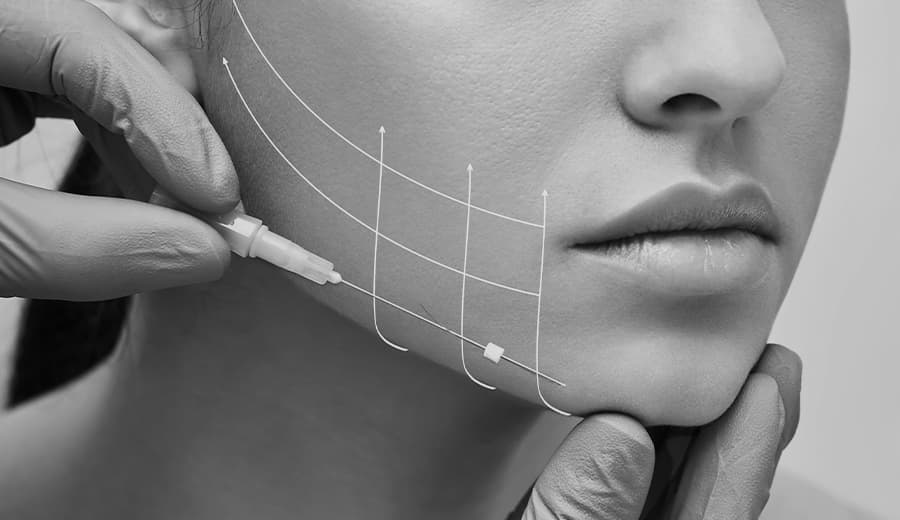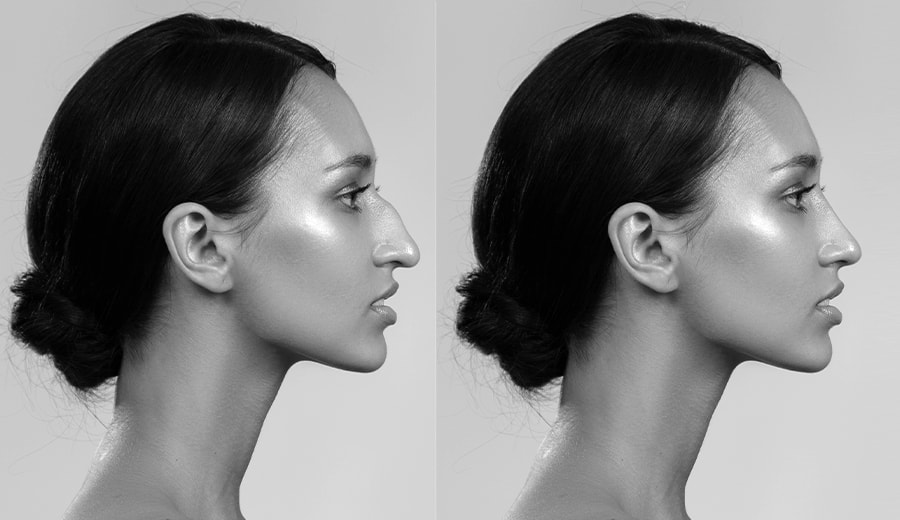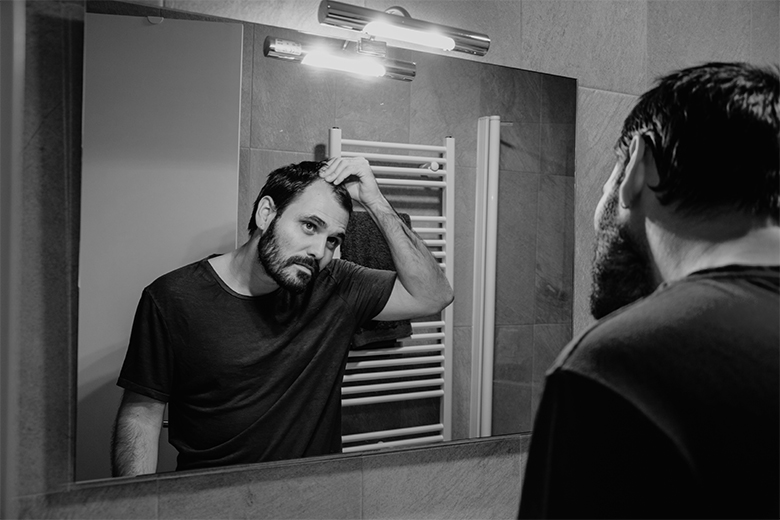October 18th, 2024
Dr. Mulholland, Md
If you are concerned about loose, sagging facial skin and fine lines, you may be considering either a mini facelift or a thread lift. These two cosmetic procedures are not as invasive as a full facelift, but that still offer visible results. However, you may be unsure which procedure is best for you. Here, we’ll review the differences between a mini facelift and a thread lift, to help you determine which procedure best addresses your concerns.
What Is A Mini Facelift?
As its name suggests, a mini facelift is a cosmetic surgery procedure similar to a full facelift but is less invasive. It is commonly performed on patients who are concerned about “jowls,” or sagging skin at the jawline. To perform a mini facelift, your surgeon will make two small incisions behind your ears and will then pull your facial tissue toward the ears to remove excess skin and sagging tissue. Your surgeon will also tighten your muscles and iron out any wrinkles before closing the incisions. The procedure is performed under general or local anesthesia. The results of a mini facelift will last between five to 10 years.
What’s The Difference Between A Mini And Full Facelift?
While a mini facelift is effective at restoring a youthful appearance, eliminating excess or sagging skin, and smoothing out wrinkles, the results of a mini facelift will not last as long as the results from a full facelift, which can last up to 15 years. In addition, because a mini facelift is a much less invasive procedure, the results will be less dramatic than with a traditional facelift.
However, those who choose a mini facelift over a full surgical facelift will have a much shorter recovery time: mini facelift patients can typically recover in two to three weeks, while those who opt for a full facelift can expect their recovery time to last between three to five weeks. Mini facelifts also result in significantly less bruising and swelling than full facelifts, since they are significantly less invasive.
What Is A Thread Lift?
A thread lift, also known as an injection thread lift, is a minimally invasive facelift created, developed, and pioneered by Dr. Mulholland, TPS’s former Lead Surgeon. To perform a thread lift, Toronto Plastic Surgeons will inject suspension threads into the facial areas that need lifting. Then, the barbed sutures are pulled back, which lifts the skin. The suture is then secured, resulting in a tighter, more youthful appearance. A thread lift procedure lifts excess skin rather than removing it (as is the case with a mini facelift or full facelift).
Because it is a minimally invasive procedure, recovery time is brief, usually around one to two weeks. The procedure takes about one to two hours.

What’s The Difference Between The Two Procedures?
For a mini facelift, your surgeon will pull back and remove excess, sagging skin using incisions, while a thread lift involves threads being injected into your skin, which is then pulled back. Because the procedure is less invasive, the recovery time after a thread lift is shorter: around one to two weeks, compared to three to four weeks for a mini facelift. However, the results of a thread lift last for less time than a mini facelift: thread lift results last around three to five years, whereas a mini facelift will last up to 10 years.
Both facial rejuvenation procedures tighten facial skin and smooth out wrinkles, but a mini-facelift might be ideal for those looking for more dramatic results, as there are limitations to the extent to which the thread that is injected into the skin can be stretched.
Who Is An Ideal Candidate For These Procedures?
Good candidates for either a thread lift or a mini facelift procedure are those who are concerned about the loss of elasticity in their facial skin, as well as with excess, sagging skin and fine lines. Candidates for both procedures should be in good physical health and have realistic expectations for their procedure results since both a thread lift and a mini facelift will not offer the dramatic results of full facelift surgery.
In addition, a thread lift may be ideal for those who are medically unable to undergo a mini facelift.
Which Procedure Should You Go With?
Whether a mini facelift or a thread lift is ideal for you depends on a number of factors, most of all your desired outcomes. If you are struggling with an excess of loose skin and a loss of muscle tension and elasticity, both procedures will affect your appearance and restore youthfulness to your face. However, a mini facelift may be preferable for those looking for more noticeable, dramatic results, as there are limitations to the extent to which the threads used in a thread lift can be pulled back. In addition, those with deeper facial creases and more loose skin may find that a mini facelift is more suited for their desired outcomes.
A thread lift may be the preferable option if finances are a concern, as it is less costly than a mini facelift. Thread lift procedures at TPS start at $6,999, while mini facelifts start at $11,999.
The best way to determine which procedure is ideal for you is to book a consultation with Toronto Plastic Surgeons at TPS. Both are board-certified, expert plastic surgeons who are well experienced in facial cosmetic surgery, including mini facelifts and thread lifts, and will be able to determine which type of surgery is best suited to your specific concerns.
FAQs
How Much Does Each Procedure Cost?
At TPS, thread lift procedures start at $6,999, while mini facelifts start at $11,999.
Are There Any Risks For Either Procedure?
As is the case with all cosmetic surgeries, there are some risks and potential complications to both a thread lift and a mini facelift. With both procedures, there is a risk of irritation or infection at the surgical site. With a thread lift, it is possible that your sutures may become visible; however, if this occurs, Toronto Plastic Surgeons will remove the sutures. With a mini facelift, hematomas — small collections of blood under the skin — may occur, but these can be drained.
These risks can be reduced or eliminated by following your surgeon’s instructions for aftercare and recovery.
How Painful Is Each Procedure?
Both a mini facelift and a thread lift are minimally invasive, meaning the amount of pain and discomfort experienced by a patient will be minimal. In addition, because either local or general anesthesia is administered prior to each procedure, you will not experience any discomfort during your surgery. However, it is normal to have some swelling or bruising at the surgical site following your procedure, and you may also experience some facial tenderness.
Your surgeon will make recommendations on the medication you can take to reduce any pain or swelling following your surgery.



